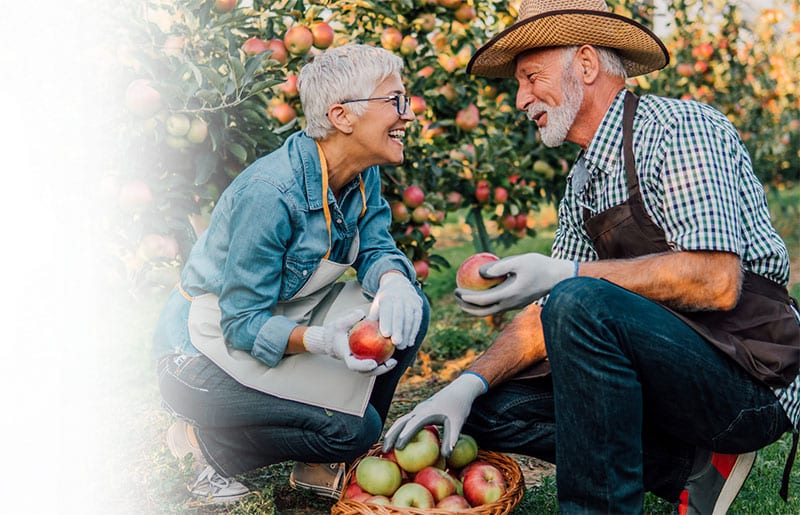
Food Safety: What You Need to Know
Nearly everyone has suffered the misery of foodborne illness, or food poisoning, at some point.
Although most cases of food poisoning aren’t serious, knowing the basics of food safety is important for keeping yourself and others healthy.
Read on to learn how you can help prevent food poisoning at home and dining out.
How food poisoning happens
Food poisoning happens when food is contaminated with bacteria, like Salmonella, or viruses like norovirus (the “stomach bug”).
In general, food poisoning occurs due to one or more of the following factors:
- Undercooked food
- Leaving raw or cooked food out at improper temperatures for too long
- Contaminated cooking utensils and equipment
- Poor health or hygiene of the person preparing the food
- Food that comes from unsafe or unregulated sources
The four steps to food safety
To ensure food stays fresh and safe, the CDC recommends that everyone follow four simple steps when preparing food.
- Clean – Wash your hands and all surfaces in the kitchen as often as you can before, during and after preparing food. Hands should be washed in warm, soapy water for 20-30 seconds. All utensils, cutting boards and dishes used to prep food should also be cleaned with hot, soapy water – same with all countertops.
- Separate – Avoid cross-contamination with your food. This means you should keep raw poultry, meat, dairy and seafood separate from all other foods in your grocery bags, fridge and food prep areas.
- Cook – Always use a meat thermometer to make sure you’re cooking meat and seafood to the safe minimum temperatures before eating.
- Chill – Refrigerate all food, raw or cooked, promptly after coming home from the grocery store and after preparing and serving a meal. When food is left out at room temperature, bacteria can reproduce very quickly. Toss any food that’s been sitting out for more than two hours.
Food safety at home
When you’re preparing and cooking food at home, you have almost total control over food safety. In addition to the four steps listed above, here are some other excellent ways you can keep your food safe and healthy at home:
- When washing your hands, don’t just wash your palms. Scrub between your fingers, under your nails and the backs of your hands up to your wrists.
- Wash fruits and veggies before peeling or chopping them. Germs can spread from the outside to the inside of produce as you cut them.
- When using your microwave, let food stand to continue cooking a bit after the microwave shuts off. Letting food sit lets any cold spots to absorb heat from hotter areas and cook more thoroughly.
- Keep your refrigerator between 32 ̊F and 40 ̊F. Your freezer should be at 0 ̊F or lower.
- Always thaw frozen foods by putting them in the refrigerator 24 hours before you plan to cook or eat them. Never try to thaw food in warm water.
Food safety tips for dining out
It may seem like you have no control over food safety when you’re dining out. But there are actually several steps you can take to ensure you get a quality meal:
- Check health inspection scores – All health inspection scores are public information. You can check out any San Diego restaurant’s scores and detailed inspection report online before you go.
- Watch for safe food-handling practices – If you can see into the kitchen, make sure employees handling food are doing things like using gloves and keeping hair tucked back and away from their faces.
- Only eat food that is properly cooked – Certain foods like poultry, meat and fish must be cooked at a certain temperature to kill any harmful germs. If you’re served a dish that looks undercooked or is lukewarm, don’t be afraid to send it back. It could mean the difference between a lovely evening and a very unpleasant night.
- Look for proper serving etiquette at buffets and salad bars – Buffets and salad bars can be breeding grounds for bacteria. There should be “sneeze guards,” or partial plastic partitions, between patrons and the food. All hot food needs to be steaming, and cold food must be chilled.
- Get the doggy-bag home fast – Only take home leftovers if you’re going to be able to refrigerate them within two hours of eating. If not, leave them on your plate.
For more great info on how to stay safe and healthy in San Diego, scroll through Scripps Affiliated Medical Groups’ helpful articles.

Join our Senior Wellness Society for the latest news on Medicare and tips for healthy living in San Diego!
Sign up now ›Are you looking for specialized medical care in San Diego?
Our directory has more than 850 doctors in San Diego County of various specialties who are available to help you.
Find a doctor